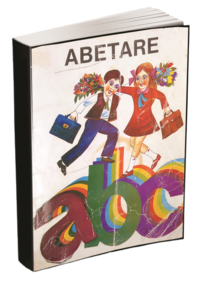The Albanian alphabet is a variant of the Latin alphabet used to write the Albanian language. It consists of 36 letters:
The Albanian National Awakening, commonly known as the Albanian Renaissance or Albanian Revival, is a period throughout the 19th and 20th century of a cultural, political and social movement in the Albanian history where the Albanian people gathered strength to establish an independent cultural and political life as well as the country of Albania.

Eqrem Çabej was an Albanian historical linguist and scholar who, through the publication of numerous studies gained a reputation as a key expert in research on Albanian language, literature, ethnology and linguistics.
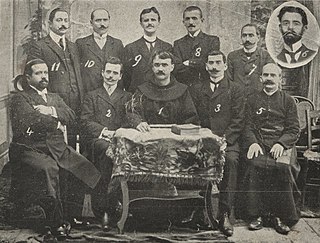
The Congress of Manastir was an academic conference held in the city of Manastir from November 14 to 22, 1908, with the goal of standardizing the Albanian alphabet. November 22 is now a commemorative day in Albania, Kosovo and North Macedonia, as well as among the Albanian diaspora, known as Alphabet Day. Prior to the Congress, the Albanian language was represented by a combination of six or more distinct alphabets, plus a number of sub-variants.

Parashqevi Qiriazi was an Albanian teacher of the Qiriazi family who dedicated her life to the Albanian alphabet and to the instruction of written Albanian language. She was a woman participant at the Congress of Manastir, which decided the form of the Albanian alphabet, and the founder of the Yll' i Mengjesit, a women's association. Parashqevi was also a participant in the Paris Peace Conference, 1919 as a member of the Albanian-American community. She was the sister of Sevasti Qiriazi, who was the director of the first Albanian School for girls in Korça, opened in 1891.
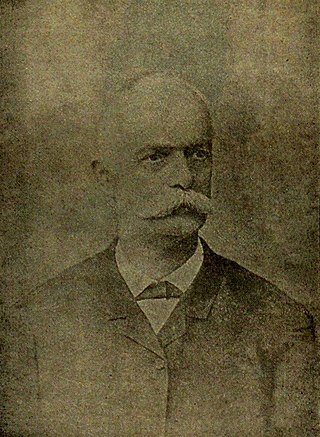
Jani Vreto was an Albanian writer, printer, publisher and important figure of the Albanian National Awakening. He was responsible for setting up and overseeing the work of the first Albanian printing house in Bucharest in 1886.

Naum Veqilharxhi was an Albanian lawyer and scholar. In 1844, he published using a unique alphabet for the Albanian language with characters he had created himself, the Vithkuqi script. Veqilharxhi is one of the most prominent figures of the early Albanian National Awakening, and is considered by Albanians as its first ideologue.

Athanas Sina, also known as Thanas Sina, was an Albanian journalist, teacher and activist of the Albanian National Awakening. Sina was the second headmaster of the Mësonjëtorja, the first officially recognized Albanian-language school in the Ottoman Empire. He was also member of the Bashkimi organization, whose alphabet proposal in the Congress of Monastir would become the official alphabet of Albania.

Mahir Domi (1915–2000) was an Albanian linguist, professor, and academic. He was one of the organizers and main participants of the Albanian Orthography Congress, and member of the follow-up commission responsible for deploying the orthographic rules of the Standard Albanian language.
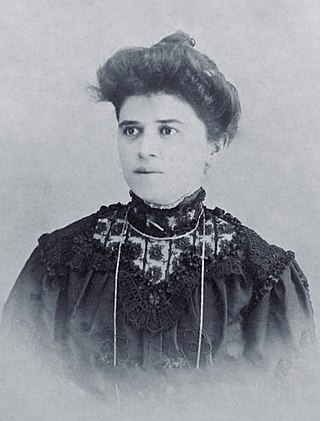
Sevasti Qiriazi-Dako was an Albanian patriot, educator, Protestant missionary, author, pioneer of Albanian female education, and activist of the Albanian National Awakening.

Society for the Publication of Albanian Letters was a patriotic organization of Albanian intellectuals, promoting publications in Albanian, especially school texts, which were extremely important for the younger generation's education. It was founded on 12 October 1879 in Istanbul, Ottoman Empire.
Namik Resuli was an Albanian linguist and academic.

Skënder Petro Luarasi was an Albanian scholar, writer and anti-fascist activist.
Constantine of Berat, known among Albanians as Kostandin Jermonak Berati or shortly Kostë Berati, was an Albanian writer and translator of the 18th century.

The Albanian Orthography Congress was a linguistics event held in Tirana, People's Republic of Albania in 1972. It established for the first time the unified orthographic rules of the Albanian language which are still in use today.
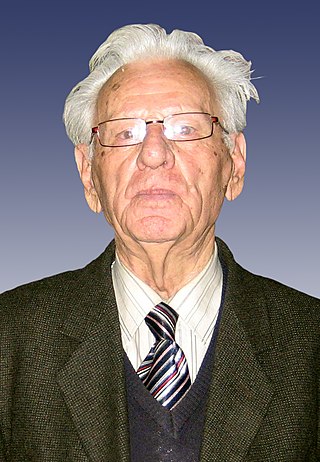
Idriz Ajeti was an Albanologist from Kosovo and one of the main researchers and authorities on the Albanian language studies of post World War II. He was involved for a long period in the academic life of the University of Pristina, and was a member of the Academy of Sciences and Arts of Kosovo, being its chairman for seven years.
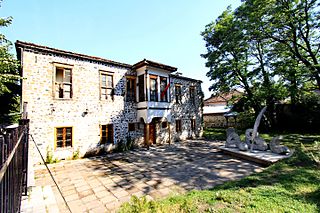
The National Museum of Education is a national museum located in Korçë, Albania. The museum is set up in the building where the March 7, 1887 opened the first Albanian school, otherwise known as Mësonjëtorja. It contains the history of Albanian writing and Albanian publications, such as the first Albanian alphabet written by patriot Naum Veqilharxhi and the second Albanian alphabet written by Kostandin Kristoforidhi. There are also pictures and photos of prominent patriots who contributed to the opening of the school, such as Pandeli Sotiri, Petro Nini Luarasi and Nuçi Naçi.
Nikollë Gazulli was a parish priest and Albanologist lexicographer with an interest in ethnography. He wrote the first onomastic dictionary of Albanian and is known as the co-founder of lexicography in the language along with Pano Tase, though Gazulli would be the last cleric to publish in the field within Albania’s borders. Linguist Aleksandër Xhuvani called him the "Father of Albanian toponymy, while Father Zef Pllumi called him “the greatest expert the [Gregj Fishta] Franciscan Library ever had [on staff]." Despite his contributions, he was held in damnatio memoriae by the People's Socialist Republic of Albania and therefore never mentioned in Albanological discourse during its rule.

Said Najdeni, also known as Hoxha Voka, was an Albanian imam and activist in the Albanian National Awakening.

Theodhor Haxhifilipi, also known as Dhaskal Todhri, was a teacher from Elbasan, who is credited as an inventor of an original Albanian alphabet. The Todhri script, as is called because of him, according to Kostandin Kristoforidhi, was either invented by Theodor, or brought by him from Voskopojë. Theodhor is the author of numerous translations of liturgical works in Albanian, of which only a few survived. A mass of John Chrysostom, preserved in a later manusrcipt of 32 pages, is amongst the rare ones kept at the National Library of Albania.
